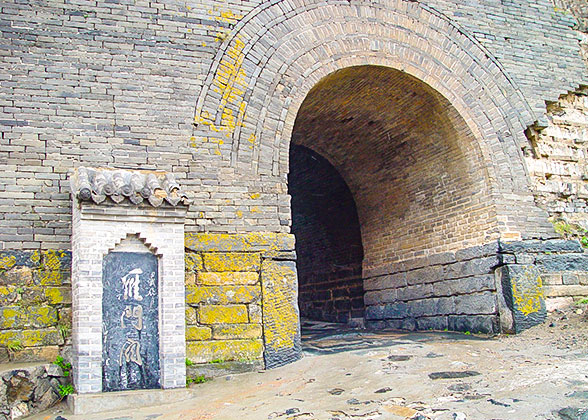 |
| Yungang Grottoes |
Datong is blessed with a wealth of historical sites which go to serve as a reminder of the city's rich history. The renowned Hanging Monastery and Yungang Grottoes were originally constructed as far back as the Northern Wei Dynasty, and the ornate Nine-Dragon Screen built during the Ming Dynasty. Historians have claimed that the area was inhabited as early as 100,000 years ago by the Xujiayao man, said to be a descendant of Peking man. In the 1970's, stone implements and mammal fossils from the Paleolithic Age were found in the west of the city. Since then, further discoveries of microlithes and ceramics from the Neolithic Age have also been made in the city.
In the Spring and Autumn Period (770 B.C.-476 B.C.), the region is known to have served as a base for several nomadic tribes.
Until to about 300 B.C., during the Warring States Period (476 B.C.-221 B.C.), administrative agencies were set up in Datong by the Zhao States, namely those of the Yanmen and Dai Shires.The place also became an important military fort for the Zhao, with a senior general and his troops dispatched to the area to confront ongoing attacks by the Hun. In the later Qin Dynasty (221 B.C.-206 B.C.), a total of 300,000 imperial troops were permanently stationed in Datong to deal with the threat of invading armies. The Emperor also gave orders to build what would become what is now known as the Great Wall along the western border as a measure to defend against enemies of the ruling state. In the Han Dynasty (206 B.C.-220), the Emperor renamed the region Pingcheng County (Peaceful County) in attempt to encourage peace and stability in the region.
 | | Hanging Monastery | |  | | Great Wall Ruins in Datong | |
In the year of 398, Pingcheng County was appointed the imperial capital by the Northern Wei Dynasty (386-534), a group of peoples originating from the Xianbei tribe. After establishing themselves in the area, the leaders began to embark on a series of large-scale construction works that would include palaces, temples and the famous Yungang Grottos. Pingcheng was to remain the political, economic and cultural center of northern China for the next 96 years. During this period, the state helped to fund the building of a number of Buddhist and Taoist temples. Many of these still stand today and give present-day Datong City a sense of spiritual ambiance.
In the latter Sui and Tang Dynasties, this place remained the focus for battles against the Hun. During the middle part of the Tang Dynasty, the Kaiyuan Temple (now the Shanhua Temple) was constructed for state ceremonies and functions. However, the fortunes of the ruling elite had taken a downturn by the end of the dynasty, with Datong conceding occupation to the fierce Qidan tribe. The Qidan were the founders of the the Liao Dynasty(915-1125) and by then governed a significant part of northern China. The Liao's leaders sought control of this region since it provided an important gateway for its troops to overcome the Central Plains inside the Great Wall. Similar to projects undergone during the Northern Wei Dynasty, the Liao also attempted to further the development of the city through the carving of Buddhist grottos and construction of temples. This type of work was also continued in the later Jin Dynasty (1115-1234) by its rulers the Nvzhen.
 | | Yanmenguan Pass, Great Wall | |  | | Nine-Dragon Screen | |
Unfortunately, Datong City was partly destroyed when conquered by the first leader of the Yuan Dynasty (1271-1368). The city was also renamed Xijing.
In the year of 1277, the noted explorer Marco Polo arrived in Datong and praised the city for its beauty as well as its thriving businesses and industries, especially those dedicated to the manufacture of weapons and arms. Defending against invading armies was a priority of the time, with the Ming authorities ordering not only the strengthening of the city
wall but also the introduction of a comprehensive defense system inside the city to guard against attacks from the Mongolians or Nvzhen tribe.
Upheaval as a result of dynastic change and the transfer of power from the Ming to the Qing (1644-1911) meant that Datong again suffered serious damage. Consequently, a series of reconstruction works were undertaken to restore the city to it former glory, and Datong once again became a renowned center for Buddhist and other spiritual activity.
On May 1st 1949, Datong City and its 13 villages was peacefully librated by the Communist army. It is now the second largest city in Shanxi Province, with four districts and seven counties contained within its prefecture.
- Last updated on Jul. 11, 2022 -




